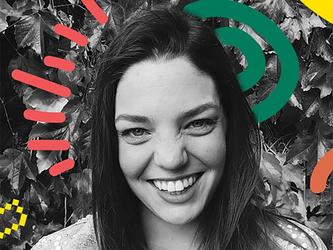Mischief maker
“At the moment, our most visited posts are dad jokes, so I think there’s an appetite for some fun and light relief for children,” says Helenor Gilmour, director of insight at Beano, speaking via Zoom in the midst of the UK’s lockdown. “When the schools were closed, we had a little girl saying to us that it felt really serious, but now they’ve settled into family life, so a bit of light relief is a great thing. Obviously, we’ve got to keep the nation laughing.”
Laughter is Beano’s business. An increasingly rare breed in publishing, as Britain’s longest running comic, it began life in 1938 and has been a childhood companion for many generations. In 2016, it was relaunched as part of Beano Studios, an entertainment network inspired by the original comic. Beano.com is now one of the biggest online channels for children, offering games, quizzes and jokes.
It is undoubtedly part of a crowded digital space and, with a notoriously fickle audience and ‘cancel-culture’ rife, the company has made insight a central part of its approach as it looks to capture children’s attention (and imagination) and stay relevant.
Beano Studios, part of publishing group DC Thomson, conducts a range of research activities to understand better not only with what children are engaging, but also their thoughts and motivations about subjects ranging from school and sport to their families and friends. This includes an ethnographic ‘Trendspotter’ panel of 40 children aged seven to 16, observational home visits, a parents’ panel and user experience testing.
For Gilmour, the current pandemic has validated the company’s methodological approach as it tries to make sense of what’s important to children at such an unusual time.
“We believe in the value of the depth of relationships that we have with kids and families and the longitudinal and ethnographic value of it but, at times like these, it’s really come into its own. The kids and their families trust us – we switch on the webcam and say: ‘Tell us about your week,’ and they just open up,” says Gilmour. “As a society, we’ve really opened up to each other, haven’t we?”
This is especially evident in the feedback children are sharing about their experiences of life during lockdown. Gilmour adds: “There’s a sense of communities coming together – kids are telling us that the highlight of their week is the Clap for Carers on a Thursday because they’re seeing their neighbours. The kids – and even teens – are enjoying that, whereas classically we would see teens push back on things like that.”
Given the increased time spent at home as a result of school closures, it’s unsurprising that Beano.com saw an uptick in website traffic during lockdown, averaging 2m organic monthly users in the UK and the US, up from 800,000 pre-lockdown.
However, looking at the timings of logging on and off showed a quicker drop-off in the evening than the publisher had seen prior to the pandemic – a result of what Gilmour attributes to families making a concerted effort to spend time together for a shared evening meal. This is backed up by findings from the Trendspotters panel suggesting that families were spending more time together, for example, by watching a film together via Disney+.
All of this raises a bigger question of whether the pandemic will change the role of children within the family unit in the longer term, with families homeworking together and children communicating with friends digitally. Beano is focusing its strategic efforts on trying to understand this – not only to predict what impact it could have on its core business, but also for the businesses of its Beano Brain insight consultancy clients and its creative agency Trouble.
“We’ve spent 20 years building spaces that are open plan to bring families together and now we’re talking to kids who are building dens to try to get some me-time,” Gilmour observes.
In one sense, the pandemic has created the ideal environment for research, as some of Beano Brain’s clients have realised, she says.
“It’s a classic research technique, to remove whatever it is you’re researching. For clients interested in sport and activity, it is a fascinating time [to look at] what they mean to children.”
There is no one clear picture emerging from this peculiar set of circumstances, however, and lockdown has also highlighted some uncomfortable differences in terms of families.
While children who have access to a garden or outdoor space have become more active than usual, the “flipside” of that, says Gilmour, is hearing from those who don’t. “That’s been quite difficult to listen to. Although they’re getting on with it, they’re not having the same experience – we can absolutely contrast the experience from the kids who do have access to outside space.”
Clients have been interested in how children from more disadvantaged demographics are coping with the situation, Gilmour says. “A lot of clients are just asking: ‘What can we do to help?’ Previously, the question would be: ‘What’s the opportunity?’”
Character development
At the heart of Beano is its stories, and insights are used to help drive that forward, whether it’s in terms of informing content strategy around what children are interested in for Beano.com or for the Beano comic, which has around 20,000 subscribers. “The reason for a lot of the methodologies that we’ve developed was around driving content – it’s fundamental.”
Insights can also help inform new opportunities around the brand’s intellectual property.
“There’s also the Dandy IP in there, there are lots of different channels we could look at. It may be that Minnie the Minx could become a live character who is a YouTuber with her own gang of mates running a podcast for example. It’s about taking the essence of what we have and using insights to drive that even further.”
The insights team is involved in the next series of CBBC’s Dennis and Gnasher Unleashed, for example, and character development – making sure that the characters are relevant to children today.
Insights are shared within the business on a fortnightly basis, with a release containing key points on up-to-date influencers and the trends in which children are most interested.
The Dundee-based editorial team and the insight team also discuss the content plan and calendar, and what Gilmour terms “early spots” from the research – topics being discussed by children in the playground but that may not yet have made their way onto the radar of brands, publishers and parents alike.
In recent times, these have included Fortnite – Gilmour says the team spotted it “quite early” and was therefore able to develop content accordingly – and Animal Crossing. Alongside the trendy, sometimes transient topics, there are also longerlasting ones, including Harry Potter, Lego and Disney.
In 2019, Beano produced a report on Generation Alpha – children under the age of 10 – and established five hypotheses on their behaviour based on semiotic and quantitative research and a survey of 2,000 children and their parents. In addition, the company analyses behavioural data and digital analytics from the website and findings from its panel, all of which can be used to test content ideas on Beano.com and assess the response.
At the start of 2020, Beano Studios launched an omnibus service to survey children and youth directly within Beano.com. It works by slotting a survey question into a quiz, but questions must align with the website’s editorial policy. In this way, the publisher can offer 1,000 responses from children aged between seven and 14, by age, gender and geography – UK or US. Responses are anonymous, as Beano.com does not collect personally identifiable data on its website.
The omnibus has already highlighted one particular finding that contrasts with data collected from research with parents about children’s social media use. When children were asked directly about what digital platforms they use, TikTok ranked far more highly than it did for parents completing Ofcom’s research (Ofcom Kids Media Report, February 2020 ).
“As parents, we all feel quite judged, whereas kids instinctively give you an answer,” says Gilmour, but stresses she isn’t claiming that one form of research is more valid than another.
“We’ve got quite a close relationship with Ofcom and when we saw TikTok mushrooming, we presented to them and said: ‘You need to be aware of this because we feel it’s blowing up’ and it’s helped that we’re able to quantify that now.”
Game plan
The Football Association (FA) worked with Beano Brain on qualitative and quantitative research for the launch of its SuperKicks app, including user experience testing.
The initiative was aimed at engaging children aged five to eight in football and to equip them with the core skills needed.
“We explained the barriers for children and how if a child hits a barrier too soon, or feels like they don’t have the competence or can’t do something quickly, they won’t carry on,” says Gilmour.
Beano worked with the FA to remove certain technical terms from the app, for example, ‘free kicks’ was changed to ‘kicking the ball’, and rather than ‘penalty areas’, the app referred to ‘swamps full of crocodiles’.
The UX team worked on the development of the app and user interface testing, involving a technique where kids could trial the app via their own device at home. This led to “useful early information” on the “barriers” and “technical glitches”, adds Gilmour.
Research to understand the language used by children involved face-to-face video research with the Trendspotters panel.
This article was first published in the July 2020 issue of Impact.

We hope you enjoyed this article.
Research Live is published by MRS.
The Market Research Society (MRS) exists to promote and protect the research sector, showcasing how research delivers impact for businesses and government.
Members of MRS enjoy many benefits including tailoured policy guidance, discounts on training and conferences, and access to member-only content.
For example, there's an archive of winning case studies from over a decade of MRS Awards.
Find out more about the benefits of joining MRS here.














0 Comments